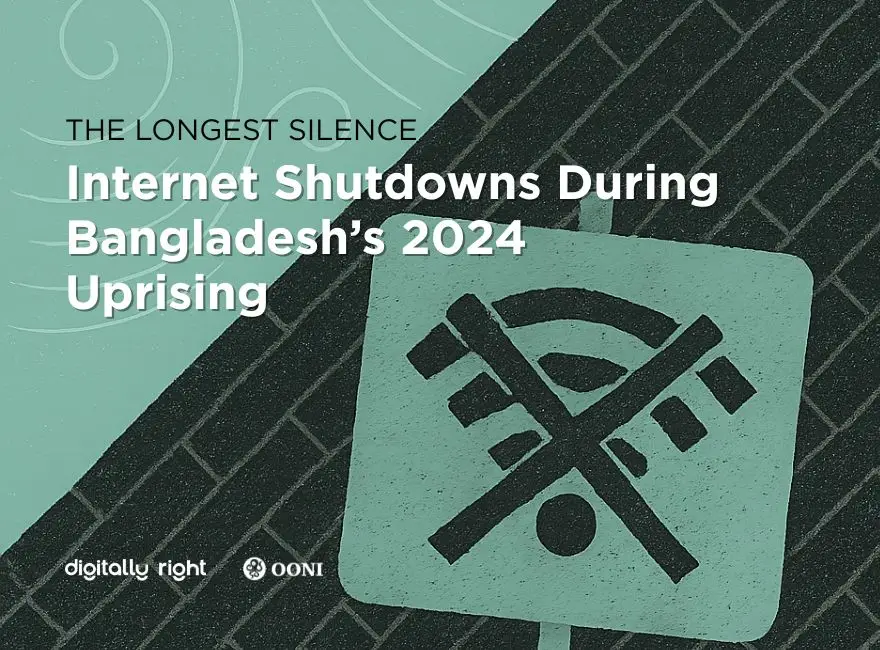During the student-led uprising in July–August 2024, Bangladesh witnessed its longest internet shutdown. Over the 22-day period, from July 15 to August 5, the shutdown coincided with mass protests, the killing of hundreds of demonstrators, and widespread human rights violations. Although there have been multiple internet shutdowns in Bangladesh since 2009, the July–August 2024 shutdown was unprecedented.
Multiple layers of control were deployed during this shutdown, ranging from nationwide blackouts to bandwidth throttling, cache server deactivations, and targeted blocking of social media platforms and VPNs. The implementation was marked by a lack of transparency, overlapping government actors, and informal or verbal directives.
Digitally Right Limited, in collaboration with the Open Observatory of Network Interference (OONI), developed this report to reconstruct a verified timeline of these events, map how the shutdown was enforced across different network layers, and assess its broader implications for accountability, rights, and access to information during political crises. It is based on news coverage from the time of the uprising and the period following Sheikh Hasina’s fall from power, supplemented by technical data from international internet monitoring organizations and insights from interviews with service providers and authorities.
This report segmented the 22-day period into five phases, documenting each phase’s political developments, patterns of protest and repression, and the specific forms of network control imposed. It examined not only when shutdowns occurred and what form they took, but also the mechanisms and institutions through which they were executed. The goal was to reconstruct a verified timeline, linking disruption to its political backdrop, technical characteristics, and chain of responsibility.
Key takeaways
Unprecedented scale and duration: The July–August 2024 internet shutdown was the longest and most geographically extensive in Bangladesh’s history, marking a significant escalation of digital control.
Evolution of censorship tactics aligned with protest milestones: Authorities deployed a broad and evolving arsenal of control methods, from complete nationwide mobile blackouts and broadband throttling to sophisticated selective platform blocking.
Correlation between intense shutdowns and casualties: The most intense periods of network disruption, particularly full blackouts, broadly coincided with spikes in reported violence and casualties during the anti-discrimination movement.
Deliberate opacity and fragmented authority: Shutdowns were carried out with a stark lack of official disclosure, relying on informal directives (e.g., via WhatsApp) and involving multiple government entities (BTRC, NTMC, and DoT), often operating with overlapping or unclear lines of authority, leading to confusion.
Targeted crackdown on circumvention tools: Authorities actively worked to thwart circumvention efforts, including a crackdown on VPNs (like Proton VPN) and other free apps, making it significantly harder for users to bypass restrictions.
Leveraging service providers for implementation: Internet Service Providers (ISPs) and International Internet Gateways (IIGs), along with mobile operators, were extensively utilized to implement censorship, often being instructed to disable cache servers and comply with verbal or informal directives.
Internet control as a central state response to protest: The entire episode highlights how internet shutdowns and censorship were not isolated incidents but a dynamic and central tool used by the state to control information flow, suppress dissent, and manage the public narrative during a period of profound political and social upheaval.
Read the full report here
To read the report on the OONI website, click here.



